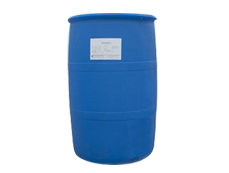The oil-related structure of surfactants is different from that of long chain hydrocarbons, and the following structures are expanded:
① Straight chain alkyl (C8-C20); ② Branched alkylene (C8-C20); ③ Alkylphenyl (the number of alkylcarbon atoms is 8-16); ④ Alkylnaphthyl (the number of alkylcarbon atoms is more than 3); ⑤ Rosin derivatives; ⑥ High molecular weight polyoxypropylene; ⑦ Long chain perfluoro (or chloro) alkyl; ⑧ Perfluoropoxypropenyl (low molecular weight); ⑨ Siloxane, etc. The water - related genes of the plant are various and different.

The difference of surfactant properties is related to the size and shape of hydrocarbon group, but also the hydrophilic group. Therefore, the classification of surfactants is generally based on the structure of hydrophilic groups, that is, according to the types of ions when surfactants are dissolved in water, they can be divided into four categories: cation, anion, amphoteric and non-ionic. In industrial production, two types of anion type and non-ionic type are used.
The hydrophilic oil affinity of surfactants is related to wetting, washing and emulsification, mainly in HLB value and critical micelle concentration (CMC).
Surfactant is also called interface active agent. In a narrow sense, it refers to the substances that can significantly reduce the surface tension of water at a very low content called surfactant. Generally speaking, it refers to all the substances that can make the surface state of the system change obviously, which is called surfactant. The surfactant molecules are composed of oil-soluble and water soluble hydrophilic groups. The oil-related groups are represented by long hydrocarbon chains. Hydrophilic groups are polar groups, such as hydroxyl, carboxyl, amino, sulfonic and ether groups. The different affinity of the two groups independently and simultaneously occurs. This characteristic makes the liquid surface change many properties, which are manifested in the adsorption on the surface or interface, the decrease of surface force and interfacial tension, wetting, cleaning, dispersing and solubilizing, emulsification and lubrication.